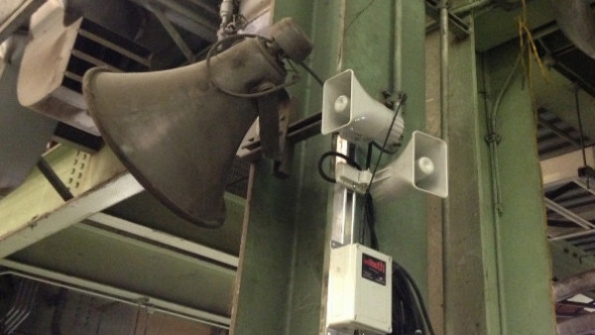Wireless PA system solves sprawling plant’s messaging challenges
Wireless PA system solves sprawling plant’s messaging challenges
When you’re running a 1,094 megawatt coal-fired power plant in the Midwest, you tend to be extremely safety conscious. Hundreds of employees work in various conditions, some of which can be quite hazardous. Also, these employees are spread across the plant’s sprawling, 200-acre footprint.
Regardless of whether their normal daily activities are limited to a few blocks or they traverse the entire facility and multiple buildings, company officials needed a means of communicating a wide variety of messages to every employee on site, whenever it is warranted.
Communications in this facility, like many where components are added over the years, was a mixed bag. There was a hardwired PA system in place, but officials wanted a way to supplement it with a system that would interface with it. The new system also had to be loud enough to be heard by those employees who routinely wear ear protection – but soft enough for those working in confined areas like trailers or offices.
In addition, messages had to be broadcast throughout the 200-acre facility, even reaching employees who may be traversing through deactivated areas of the plant. Additionally, many (though not all) employees have portable radios—again, these needed to be integrated into the new system. The company’s plan to upgrade to digital radios added another wrinkle, as the new radios also must be integrated into the supplementary PA system.
Given the many nuances of the “messaging footprint,” coupled with installation concerns and pricing questions, the project was certainly not routine or easy.
Site officials contacted Steve Orr, vice president of Cardinal Wireless, in Indianapolis, who knew the facility well, having supplied the company with two-way radios previously. He brought a demonstrator model of a wireless PA system to show firsthand what power-plant personnel could expect from this technology.
Company officials walked Orr around the site, stopping in areas where communications are a concern—like those with high ambient noise or elevated temperatures, as well as the deactivated areas of the plant. The demo was successful enough that after putting the project out to bid, the company ultimately awarded the purchase contract to Cardinal Wireless.
Installation of the wireless PA system was far simpler than a traditional hardwired PA—and was accomplished at a fraction of the cost. However, one challenging aspect, Orr recalled, involved “finding a suitable mounting surface.”
.jpg)
System fastened to wall at ceiling level.
Though the facility has abundant I-beams and catwalks, it was not replete with flat mounting surfaces. So, installation crews from the local electrical contractor used beam clamps and other innovative ways to secure the system’s speakers.
.jpg)
System mounted to an I-beam.
“Each installation, in the absence of a difficult mounting surface, was about 30 minutes” Orr said.
No trenching needed
The most significant time savings, however, was due to the wireless nature of the system, which eliminated the need for trenching. Moreover, significant installation costs were avoided by eliminating not only the trenching time, but more importantly the thousands of feet of copper wiring that would fill the trench.
Recall that many of the employees are equipped with two-way radios. While wireless certainly does not mean “wimpy” in terms of sound volume or clarity, some might suggest that reaching these employees would be more effective with a radio broadcast rather than a public address announcement—but Orr is not among them.
“Typically these radios are worn on a hip, or maybe with a speaker/mic on a shoulder, but these are insufficient to make contact, especially in an area with moderate ambient noise,” he said.
Areas with high ambient noise pose additional problems because employees in these areas wear foam ear inserts to protect themselves from the ever-present high decibel levels. Again, the wireless nature of the system came in handy in this regard, because it was easy to add additional speakers where they were needed in order to ensure that messages are clearly audible even when employees are wearing ear protection.













